Tuesday, October 26, 2010
The name Singapore was derivative from Malay word singa (lion). Singapore was originally a small Malay settlement until 1819, when the British started a trading post that developed into an important commercial and military royally base.
Except for the interruption for the three years that the Japanese occupied Singapore during World War II, it was a Crown Colony from 1867 until 1963, when it declared independence from Britain.
Singapore joined the Federation of Malaysia shortly afterwords. On expulsion from Malaysia in 1965, Singapore was separated from its traditional markets and faced economic degeneration.
In resolution, government-led rapid industrialization and business-friendly policies stimulated some of the fastest economic growth in the modern world.
Singapore now has one of the highest gross domestic product (GDP) per capita rates in the world; it is a major financial, transport and medical hub.
Crime is low, and Transparency International consistently rates it as one of the least corrupt countries in the world.
Singapore online paintings are very popular in all over the world. Most of the paintings reveals the nature & history of the Singapore.
Wednesday, October 13, 2010

This early period was followed by a series of art dynasties, most of which lasted several hundred years. The Chinese art in the Republic of China and that of overseas Chinese can also be considered part of Chinese art where it is based in or draws on Chinese inheritance and Chinese culture.
One of the areas that has revived art concentration and also commercialized the industry is the 798 Art District in Dashanzi of Beijing.
The artist Zhang Xian gang sold a 1993 painting for USD $ 2.3 million in 2006, which included blank faced Chinese families from the Cultural Revolution era.
Some of the biggest names such as Stanley Ho, the owner of the Macau Casinos as well as Stephen Wynn, a casino developer, would capitalize on the art trends. Items such as Ming Dynasty vases and assorted Imperial pieces were auctioned off.
Other art works produced in China or Hong Kong was sold in places such as Christi's including a Chinese porcelain piece with the mark of Emperor Qianlong sold for HKD.
A 1964 painting "All the Mountains Blanketed in Red" was sold for HKD. Auctions were also held at Sotheby's where Xu Diphthong's 1939 masterpiece "Put Down Your Whip" sold for HKD $72 million.
The industry is not limited to fine arts, as many other types of contemporary pieces were also sold. In 2000 a number of Chinese artists were included in Documental and the Venice Biennale of 2003.
China now has its own major contemporary art showcase with the Venice Biennale. Fuck Off was a notorious art exhibition which ran alongside the Shanghai Biennial Festival in 2000 and was curate by independent curator Fang Boy and the artist Ai Wee-wee.
Monday, October 11, 2010

Vietnamese art has a long and rich history, the earliest examples of which date back as far as the Stone Age around 8,000 BCE.
With the millennium of Chinese domination starting in the 2nd century BC, Vietnamese art certainly absorbed many Chinese influences, which would continue even following independence from China in the 10th century AD. However, Vietnamese art has always retained many peculiarly Vietnamese characteristics.
By the 19th century, the influence of French art took hold in Vietnam, having a large hand in the birth of modern Vietnamese art.
It is believed that in early times, Vietnamese people lived in stilt-houses, as depicted on the bronze Dong Son drums. Similar kinds of houses can still be found in Vietnam today.
When Chinese influence permeated Vietnam, Chinese architecture had a large influence on the basic structure of many types of Vietnamese buildings, mostly pagodas and temples, communal houses, houses of scholar-bureaucrats, upper classes, and imperial palaces and quarters. Nevertheless, these structures combined both Chinese influences and native style; Vietnamese architecture is generally much more ornamental and florid than Chinese architecture, using different colors and materials suited to the environment.
With French migration of Vietnam in the 19th century, many French-styled buildings were constructed, including villas, government buildings, opera houses, etc. Many of these buildings still stand in Vietnam and are one of the clearest remnants of the French colonial legacy.
Some of Vietnam's most notable architectural structures include:
• The Temple of Literature or (Van Mieu): Located in Hanoi, North Vietnam. It was constructed during the Lee Dynasty and dedicated to Confucius and his disciples. It is a fine example of the elegance of Lee Dynasty architecture, although much if it is in need of repair.
• The Temple of Literature is a series of courtyards, buildings and pavilions, the center of which houses the famed stone steels. These steels are placed on top of stone turtles, and are inscribed with the names of doctorate candidates successful at the Imperial examination. Also within the temple lies the "Quack To Guam" or National University, which functioned for approximately 700 years, from 1076 to 1779?
• Imperial City and surrounds, Hue: During the reign of the Nguyen Dynasty, a new imperial citadel in Hue was built, largely based on the Chinese Forbidden city in Beijing, and also called the Purple Forbidden City.
• The stronghold formerly sprawled a vast estate, but during subsequent wars and conflicts, much of it has been destroyed and later turned into rice paddies. The remaining areas are currently being restored by UNESCO.
• One Pillar Pagoda: The one pillar pagoda is one of the most ancient structures of Hanoi, its design credited to Emperor Lee Thai To. The story goes that the emperor had longed for a son, and one day dreamed that the Goddess of Mercy was sitting on a lotus flower offering him a son.
•In gratitude and reverence of his dream he ordered construction of a small pagoda in the form of a lotus, overlooking a pond. The pagoda has been rebuilt countless due to it being destroyed and burnt in wars by opponents.
•Perfume Pagoda and the surrounding area: The Perfume pagoda is an ancient structure in Ha Toy province, located specifically in Perfume Mountain, and is the site for a yearly festival attended by hundreds of thousands of Vietnamese.
• Most people reach the pagoda by taking an hour boat ride across the scenic river (passing the countryside scattered with smaller pagodas) before reaching the Perfume Pagoda itself. Inside are a series of temples and structures, and a grotto with stairs leading to two paths: "Heaven's gate" and "Hell's gate". Descending deep into the grotto one finds the Inner temple.
Tajmahal Paintings
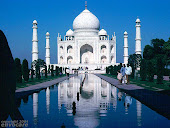
Painting Iteams
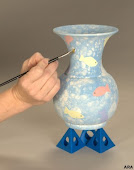
Creation of Paintings

Painting Equipments

Beautiful Rose Painting
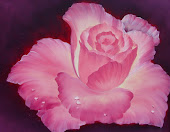
Green Nature Painting
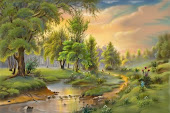
Canvas Painting

Pictute of Artist

Color Paintings
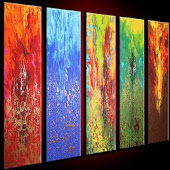
Online Paintings

